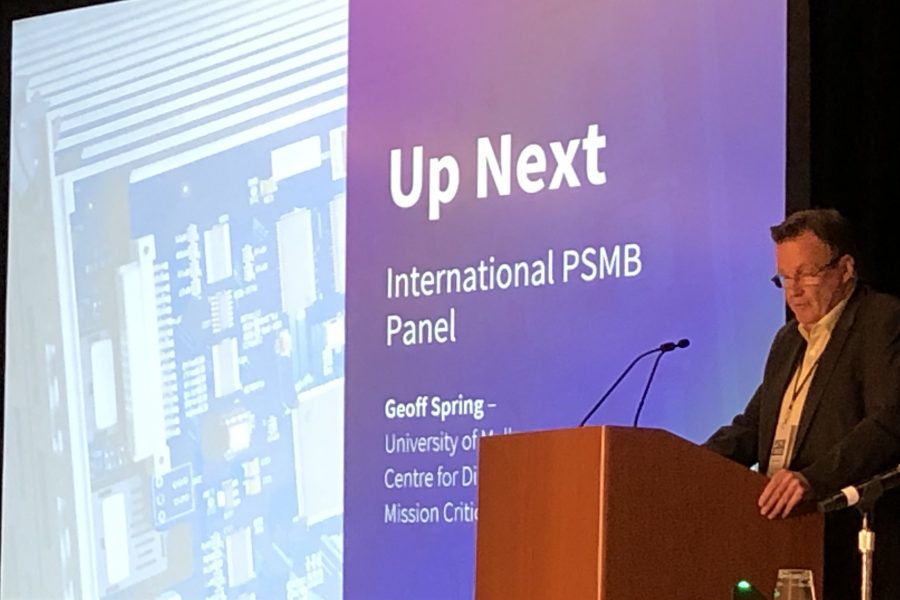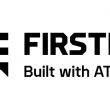France preparing to launch public-safety broadband network, official says
France hopes to have first-responder personnel begin communicating over its new RRF public-safety-broadband network in two years—when the country will host the 2024 Olympics—and deliver nationwide coverage by the end of 2026, according to a French official.
Guillaume Lambert, senior executive of the French Ministry of the Interior and head of the RRF—the French public-safety broadband network—said the RRF contract could be awarded later this year after the procurement effort was launched in 2020.
“I hope that the contract will be awarded in the next weeks or months—we are fully ready for that,” Lambert said during an international panel conducted this month at the PSCR 2022 Broadband Stakeholders Meeting in San Diego. “We are just waiting for our government to make the decisions for this awarding of the contract.
“Deployment of the network will start at the end of 2023 and will focus on the territories hosting the 2024 Olympics in France. The final deployment of the RRF should take place by the end of 2026.”
Lambert said French public-safety personnel have been using TETRAPOL land-mobile-radio (LMR) technology as their primary means of communications for the past 30 years. TETRAPOL “works very well but is limited,” but narrowband system are “slowly becoming obsolete,” he said.
LMR’s inability to deliver features like geolocation, video streaming, data transfers, and priority and preemption were particularly noticeable during the response to the November 2015 terrorist attacks in Paris, according to Lambert.
All of these features are expected to be available with the RRF, which is designed “to create a ultra-resilient network for public safety” that will deliver mission-critical services—MCPTT, MCData and MCVideo—voice-over-LTE telephony and secure IP access, Lambert said.
Continental European nations have been testing public-safety broadband interoperability as part of the BroadWay initiative that is scheduled for completion in the fall. Two consortiums—one led by Airbus and the other led by Frequentis—have been participating in the BroadWay tests that have been encouraging to date. When BroadWay is completed, participating countries will enter the BroadNet phase of the initiative, which is expected to include procurements of operational networks.
Noting that France shares borders with eight countries, Lambert said it is “crucial” that the RRF support interoperability with public-safety broadband systems in those countries.
“We will partner with BroadNet,” Lambert said, although he declined to address a question asking whether either the Airbus or Frequentis consortium is being considered for the RRF award.
While France is eyeing deployment of its RRF system, other countries represented on the PSCR 2022 international panel are much further away from having operational public-safety broadband networks.
In Canada, the 700 MHz Band 14 spectrum that is licensed to the FirstNet Authority also has been reserved for public-safety communications since 2017, according to Joe Fournier, who participated on the panel via a recorded presentation. In addition, Public Safety Canada issued a report in March of this year that outlined 10 principles of a public-safety broadband network (PSBN) in the country, he said.
While these represent important steps, Canada has not made a formal decision about its business and has not yet licensed the Band 14 spectrum to any entity or entities that would lead the buildout of the PSBN, Fournier said.
Given the situation in Canada—particularly in light of FirstNet already boasting more than 3.3 million connections and more than 20,000 subscribing public-safety agencies—it is natural for people to ask, “What is taking so long?” according to Fournier.
“If we look at FirstNet, it’s [operating since] 2017 now, and we’re still working on getting ours going,” he said.
“I’m not going to make excuses; there are none.”
However, Fournier said he remains encouraged that Canada will have an operational PSBN.
“There’s no doubt in my mind that we’ll get there, and probably sooner than we think—I’m very optimistic about that,” Fournier said.
Australia also has been discussing public-safety broadband for several years, but “we still don’t have our spectrum sorted out,” according to Geoff Spring (pictured above), a senior industry advisor from the University of Melbourne.
In 2018, the Australian government funded an $8 million proof-of-concept initiative for public-safety broadband, and a report about the results of that effort is expected to be released later this year, Spring said. However, a deployment plan has not been established, and one of the Australian carriers that did not participate in the proof-of-concept already has expressed concerns about potential implementation.
Meanwhile, New Zealand also evaluated the notion of a public-safety broadband system, but there are no plans to deploy such technology in during the next few years, according to Sirilal Mallawa-Arachchi, the principal technical adviser of mission-critical communications for the New Zealand Police.
Instead, New Zealand is going to replace its existing analog and P25 Phase 1—LMR networks that provide 98% geographical coverage—with P25 Phase 2 in the near term while working with commercial wireless carriers to deliver non-voice applications to public-safety users, Mallawa-Arachchi said.
“My thinking is that definitely I can see is that some countries will start broadband MCPTT as a supplementary service to existing narrowband PTT, until broadband MCPTT voice gets mature enough to meet the emergency services’ requirements,” Mallawa-Arachchi said.
“That is what we are going to do. For the next 5 to 6 years, I don’t think we’re going to get MCPTT implemented in New Zealand.”
Noticeably absent from the PSCR 2022 international panel was the United Kingdom (UK), which often has had a representative speak about its public-safety-broadband plans during previous PSCR events. In fact, a UK Home Office official at PSCR 2013 announced that UK public-safety agencies would start migrating mission-critical voice services from the expensive Airwave TETRA network to the LTE-based Emergency Services Network (ESN) in 2016.
But that vision has not materialized. Delays in the ESN network buildout and development of a suitable push-to-talk (PTT) solution have forced the Home Office to extend its contract for the Airwave service, which is owned by Motorola Solutions—the same company charged with developing the PTT replacement service for ESN.
Under the current ESN schedule, UK public-safety agencies would begin transitioning its mission-critical voice communications from Airwave to the ESN by the fall of 2024—less than two-and-half years away—and be completed by the end of 2026. This schedule calls for a 27-month period during which both Airwave and ESN will be used by UK first responders, but Motorola Solutions officials told the CMA that the two networks will need to operate simultaneously for a lengthier period than the current schedule contemplates.
Meanwhile, France’s Lambert acknowledged that other countries are monitoring the success of the FirstNet system in the U.S. as they develop plans for their own public-safety broadband networks.
“With FirstNet, PSCR and the whole ecosystem, the United States of America has really shown the way in the field of broadband networks for public safety,” Lambert said.

















